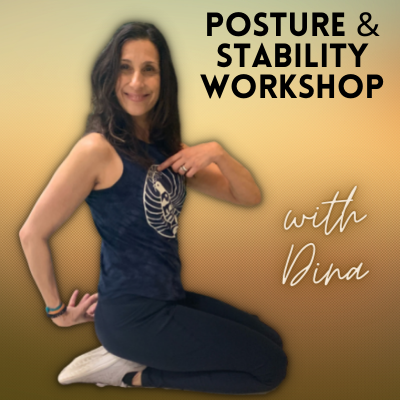
“Over time, poor posture and poor postural habits can cause major physical and mental issues. Good posture and alignment are essential for good health.”
- Dina Voigt

Slouching Your Way To Poor Health
“Stand up straight, sit up tall, put your shoulders back, stop slouching”… etc., etc.
We have all heard these phrases repeatedly throughout our lives, whether from parents or grandparents, teachers or others. These “encouraging” words were most likely met with eye-rolling, sighing, huffing, and puffing, and basically disregarded as annoying. While proper posture looks better than slouching, there is more to proper posture than meets the eye! Yes, good posture definitely looks nice, but did you know there is a direct, even deep connection to posture and one’s physical and mental health? That’s right! Over time, poor posture and poor postural habits can cause major physical and mental issues. Good posture and alignment are essential for good health.
Your posture is the result of habits formed over the course of years. Our jobs, hobbies, and other activities tend to encourage poor alignment and bad postural habits. Posture refers to how you position your body when sitting, standing, or lying down. Alignment refers to how the head, shoulders, spine, hips, knees, and ankles relate and align. Proper alignment of the body allows for less stress on the spine and helps improve posture. Standing, sitting, and even lying down with proper alignment improves blood flow which helps to keep your blood vessels and nerves healthy and supports your muscles, ligaments, tendons, and fascia. Proper posture keeps your bones and joints in optimal alignment, and decreases wear and tear on your limbs and joints.
Let’s look at just a few more ways posture and alignment can affect your health:
Good posture vs. Poor posture
Good posture
● Reduces back and neck pain
● Reduces headaches
● Improves lung capacity and other internal organ function
● Increases energy level
● Encourages better form when exercising
● Improves mood
● Improves overall spine health
● Improves muscle and joint function
● Increases confidence
● Improves circulation
Poor posture
● Contributes to and can cause digestive problems, including heartburn
● Adds to breathing issues
● Contributes to and even causes headaches
● Causes neck, back, and joint pain
● Can encourage the acceleration of spinal degeneration and even arthritis
● Contributes to anxiety and depressive thoughts as well as other mental health conditions
I am sure posture is not the first thing you think of when it comes to your mood or mental/emotional state. The mind/body connection is integral in mental health. The brain and body have two-way communication. This means that your mood can affect your posture, and your posture can affect your mood. Think about it…when you’re feeling sad or upset, you may notice you are more prone to slump or slouch; when you’re feeling happy, you may notice that you are sitting or standing taller and more upright.
Many people notice others’ poor posture without recognizing their own.
The good news is it’s never too late to learn proper posture and postural habits. Here are a few things you can do to help improve your posture and alignment today:
● Be sure to get up and move around every 20 minutes or so throughout your day – especially if you have a job where you do a lot of sitting.
● When sitting, – “mentally scan” your body and notice if you are slumped or slouching or being pulled from center and take “posture breaks”!
● Sit toward the front edge of your seat and place your feet hip-width apart, flat on the floor. Align your ankles under or slightly in front of your knees. Center your weight directly on your sitting bones, neutralizing your pelvis. Square your shoulders over your hips and align your skull over your sacrum, aligning your ears over your shoulders. Take a few deep breaths sitting tall in this centered, neutral alignment.
● Stand facing a wall. Place your hands on the wall at shoulder height. Bend your elbows, and hinge at the hip joint bringing your torso parallel to the floor with a straight spine. Once your torso is parallel to the floor, press away from the wall until your arms are straight. Take a few deep breaths here, then round your spine for a breath and go back to the straight spine/flat back—repeat 3-5x, taking deep breaths to guide the movements.
● Stand with your feet hip-width apart. Align your shoulders over hips, over knees over ankles. Align your earlobes over your shoulders. Center your weight under your arches and stand tall, aligning your skull over your sacrum, and imagine lengthening your body up against a wall. Take 5-10 deep breaths, then relax.
These are just a few things you can do throughout your day to tune into your postural and alignment habits. Proper movement, stretching, pandiculation, and other movement therapies can help improve poor postural patterns and habits.

Please feel free to email me (dina@fitnessincentive.com) with any questions you may have! And remember: STAND TALL!
Sponsored Links
About the Author

Dina Voigt
Dina Voigt is the Manager of Fitness Incentives Pilates and Yoga programs. She is a PMA-certified Pilates trainer, a certified Yoga instructor, a Personal Trainer, Group exercise instructor, and Cycle instructor.
Contact her at dina@fitnessincentive.com with any questions or for further information.









